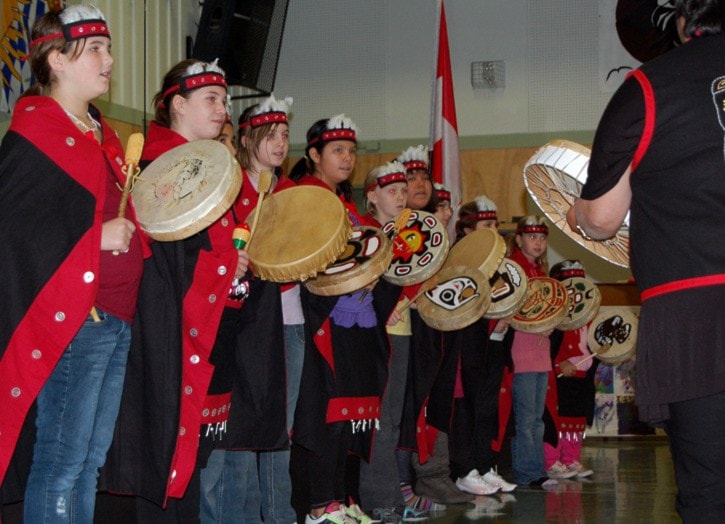Muheim Elementary School is one of the top three schools in B.C. as far as aboriginal education goes.
That’s the result found in the Report Card on Aboriginal Education in British Columbia, released by the Fraser Institute for results from the 2009 academic year.
Muheim is the only Bulkey Valley elementary school in the report.
With an overall score of 8.9, it ranked third place in the province, and significantly higher than previous results. In 2005, the school at an overall rating of 4.7, and 5.4 in 2006. No results were available for 2007 or 2008.
Muheim principal Kevin Bird is quite excited over the distinction for his school and thinks the teachers and staff deserve extra recognition for getting the school to where it is.
“I think the teachers deserve some recognition for the kind of work they’re doing and the district is doing,” said Bird. “Every student is doing better, our scores are way, way up and that includes our aboriginal students.”
This particular off-shoot of the Fraser Institute’s report card is also easier to take, he said, as Muheim is the only school that met the criteria for the report card for aboriginal education, meaning Muheim isn’t in competition with other schools.
“There’s no competitiveness with other schools,” he said. “It’s just us in it.”
The other elementary schools in the district may have either been too small or the sample size of aboriginal students may have been too small as well.
Among the programs that have contributed success he noted a drumming program where students provide drum music at special events, such as ribbon cuttings in the community.
“There’s a lot of pride in those types of activities,” he said.
The atmosphere of the school itself also contributes to its success.
“Having the atmosphere where students are feeling good about coming to school and liking at least parts of school and then having the academic teaching ability to move students forward has been a big part of it.”
As for the challenges in teaching, he said those are typically the same no matter what background the student has.
“I think the challenges are for students in general,” he said. “There’s always the challenge of poverty for any students who live in poverty. There’s challenges coming long distances.”
He said there are many students who are bused in from Moricetown.
“You can imagine the little grade one student who hops on a bus in Moricetown bright and early in the morning and comes all the way in here and then goes through a long day of hard work and then hops back on the bus and goes home.”
Smithers Secondary School was also ranked under the secondary schools category. It came out with a respectable spot of 22 out of 63.
SSS has held steady in their results since 2005; that year they got 7.1 overall, rising to 7.3 the next year. It dipped slightly to 6.3 in 2007. There was a gap in data for 2008 and then came out at 6.9 for 2009.
Hazelton Secondary School came out poorly in contrast with a 3.1 overall score. Their score peaked in 2005 with 5.6, and hit a low in 2006 at 1.7.
In the elementary school stream, Hazelton’s John Field school rated 4.4, or 40 out of 52.
New Hazelton Elementary School did well with 6.9 overall rating for 2009, or 14 out of 52.
According to the Fraser Institute’s report itself, aboriginal students are falling behind their non-aboriginal classmates. As well, there is “little apparent improvement since 2005,” the report stated.
Aboriginal students are counted as students who have voluntarily declared themselves as such. The Ministry of Education has counted 68,176 aboriginal students out of a total 648,624 registered in the province.
The results in the report card are based off of the Foundation Skills Assessment standardized test, and provincial examinations for the secondary school students.
